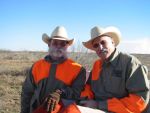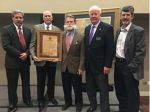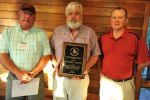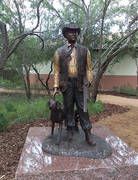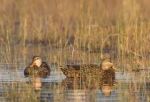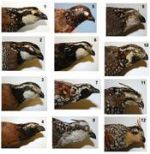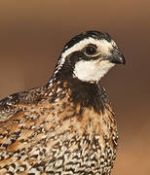
All News
In October, Fred C. Bryant, Ph.D. was honored as the 2016 Texas Outdoorsman of the Year. The ballroom at the San Antonio Country Club was filled with more than 100 close friends, family, and conservationists from across the state who gathered to commemorate Bryant’s induction into the distinguished group known as Outdoorsmen.
The Texas Parks and Wildlife Foundation has selected Stephen J. “Tio” Kleberg and Dr. Fred C. Bryant to be inducted in the 2017 Texas Conservation Hall of Fame. They are being honored for their individual achievements and their work together at the Caesar Kleberg Wildlife Research Institute (CKWRI).
Bryant is the Leroy G. Denman, Jr. Endowed Director of the CKWRI at Texas A&M University- Kingsville. The institute provides science-based information for enhancing the conservation and management of wildlife.
The Caesar Kleberg Wildlife Research Institute (CKWRI) was founded at Texas A&M University -- Kingsville in 1981 by the Caesar Kleberg Foundation for Wildlife Conservation. During the past 35 years, CKWRI has grown to become the leading wildlife research organization in Texas and one of the best university wildlife research programs in the nation.
LINCOLN, Nebraska -- The National Bobwhite Technical Committee (NBTC) honored Dr. Leonard A. Brennan of Texas with its Award for Individual Achievement at its annual meeting in Lincoln, NE, recently. The award is presented to recognize an individual's overall contributions to bobwhite research and/or management during a career.
Down in South Texas, the only tortoise found in the state lives among the thornscrub, mesquite, cacti and grasslands that characterize the Rio Grande Plains. Considering how dense and thick the vegetation here can be, most people’s first sighting of a Texas tortoise is usually on a dusty road or empty highway. If you are lucky, you might find a small, black tortoise with golden blotches on its shell ambling out of the brush during the cooler hours of the morning or evening, or after a rain shower.
"Born in Laredo, Texas, the artist started at a young age with the coaxing of a favorite high school teacher, Mrs. Quiros Walker. He acquired a BFA in Studio Fine Art at The University of Texas at Austin and was mentored by Master Sculptor Prof. Charles Umlauf. After college the artist moved to Princeton, New Jersey where he studied at Johnson Atelier Technical Institute of Sculpture. In 1985, Roberto built his first bronze casting foundry in Kingsville, Texas.
Read the full article here
The coastal prairies and wetlands of the western Gulf Coast are valuable habitats for millions of migrating and wintering waterfowl. One species that we have been working on for several years is the Mottled Duck, which is a year-round resident to this region, relying on habitats along the western Gulf Coast for all of its life-cycle requirements.
Most Texans are well-acquainted with the Northern Bobwhite, a valued game bird in much of the eastern United States. Few, however, are aware that the historical range of the Northern Bobwhite includes much of Mexico and northern Guatemala or that other “kinds” of bobwhites also occur within this region.
Hunters have been a fundamental component of northern bobwhite quail conservation for most of the past century. Bobwhite quail hunters funded the first modern comprehensive life history study of a wild vertebrate in the 1920s to understand causes responsible for population declines. This investigation identified a causal link between frequent applications of prescribed fire and persis- Atence of bobwhite quail populations in the Southeastern United States, and provided the foundation for contemporary fire ecology science.
Hunters spend countless hours trying to pattern buck movements during the rut, attempting to decipher the “code” that unlocks the secret to buck locations. Some hunters use trail-camera photos to decide where to hang a treestand in hopes that the buck will return. Other hunters believe that buck movements are simply random and chaotic; thus they may set a blind with a good view, hoping to see some antlers moving through the brush. Both approaches sometimes meet success.

